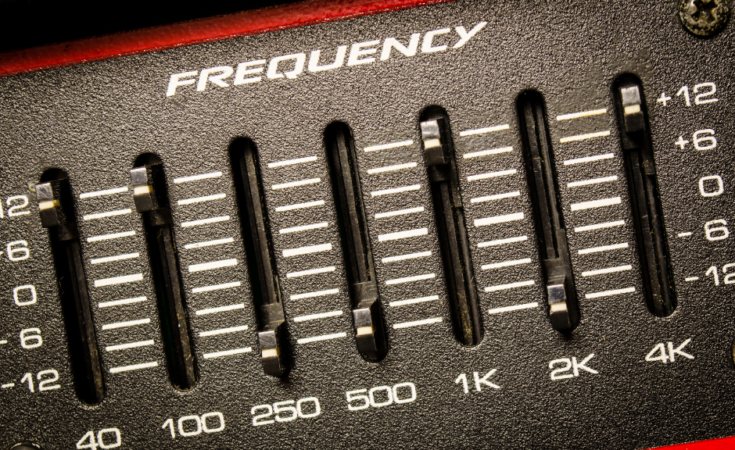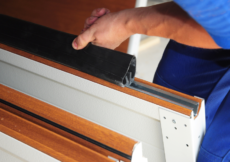Different sounds have different frequencies, and we hear lots of different frequencies every day. We usually refer to frequency as pitch and know, for example, that an earthquake has a much lower pitch than the sound of a mouse squeaking.
Frequency is one of the five characteristics of sound, along with wavelength, time-period, amplitude and speed, and allows us to enjoy things such as hearing our loved ones speak, listening to music, or watching a movie.
However, there are certain sounds out there that you might not find so enjoyable. Have you ever had to listen to the rumble of a car engine or noise from a construction site? These are example of low frequency noise, and they’re not always a positive experience. It can be really irritating when you’re trying to get to sleep but can hear your refrigerator buzzing.
So, what is low frequency noise? How well can humans hear it? And, more importantly, how can we block out high frequency noise? If you want to learn all the answers to these questions and more, keep reading on to find out all about low frequency sounds and what they’re really all about.

What Is Low Frequency Noise?
Low frequency noise is measured at around 500 Hz or lower, such as an earthquake or the noise whales produce. It is usually perceived as a low throbbing, beating, rumbling, or even just as pressure on the ears. The amount and way in which a person can hear it varies.
Sound frequency is the total number of waves produced in one second. The frequency is determined by the way in which sound waves oscillate whilst travelling to our ears, and the higher the oscillations of the frequency waves, the higher the pitch of the sound we hear. Low frequency waves oscillate lower, and, therefore, we hear a lower pitch.
While all sounds travel at the same speed in the same medium, they do not oscillate in the same way, which is why we hear different pitches based on the sound source.
Frequency measured at an extremely low frequency, below the lower limit of human audibility, usually below 20 Hz, is referred to as infrasound. Infrasound is usually felt and not heard, yet can affect the human body through hearing loss or, if exposed to for a long time, can cause dizziness and nausea. However, both hearing loss and other symptoms due to low frequency sound are quite rare.
Examples Of Low Frequency Noise
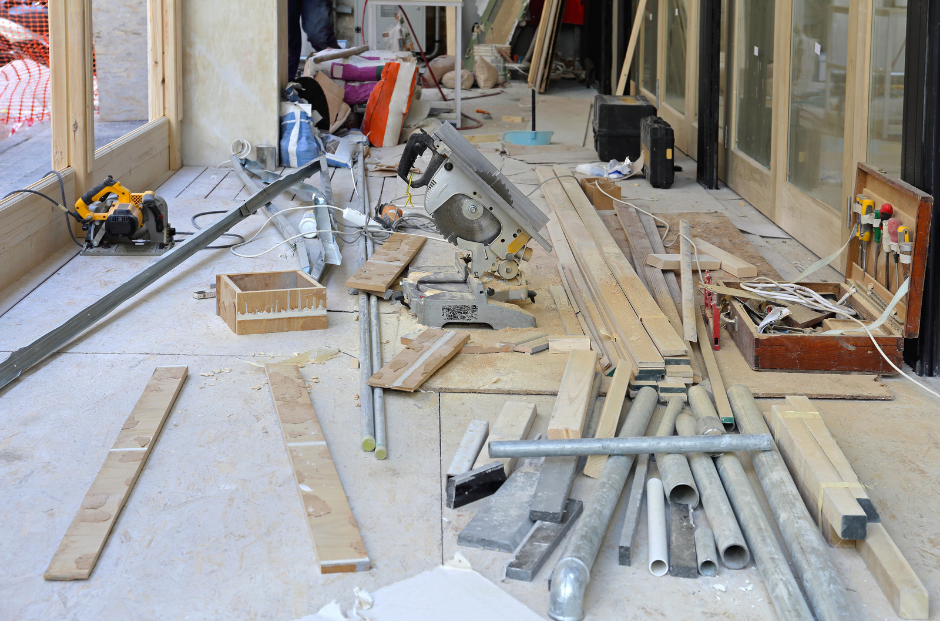
As we mentioned above, low frequency range is measured at around 500 Hz or lower. Examples of low frequency noise are:
- Whales
- Earthquakes
- Avalanches
- Severe weather
- Elephants
- Wind farms
- Giraffes
- Washing machine
- Lawn mower
- Plane taking off
- Refrigerator
- Construction work
What Is The Hearing Threshold?
The hearing threshold is the lowest intensity where a person begins to hear a sound. Humans can usually hear frequency range between 32 and 32,000 Hz at intensities of 10 dB and louder. The most important frequencies for speech and language are between 250 and 8,000 Hz and this is what is considered normal hearing range.
Usually, the younger you are, the higher the frequency you can hear. Some older people can even struggle hearing sounds over 4,000 Hz. The hearing threshold varies from person to person, which is why some people can hear some sounds and others cannot.
Humans can be affected if they are exposed to ultrasound frequency, as well as infrasound frequency. Some people can experience nausea, dizziness, headaches, and fatigue.
Uses Of Low Frequency Noise

While low frequency sound can be irritating, especially when you are trying to get to sleep and all you can hear is the low hum of the fridge, it does also have its uses.
Infrasound is particularly useful and has been used for monitoring earthquakes and volcanos, charting rock and petroleum formations below the earth, and also in ballistocardiography and seismocardiography to study the mechanics of the heart.
Very low frequency sound has been shown to help with color blindness, help recover sense of smell, and invoke euphoric feelings in sound-sensitive people. It has also be used in the military.
Unfortunately, there is very little research into the benefits and effects of low frequency sound, and many positive incidents in which it was used are isolated incidents lacking solid research or well-recorded evidence.
Low Frequency Hearing Loss
As we age, our ability to hear lessens. Higher frequency hearing loss is more common than low frequency hearing loss. This is because the lower part of the inner ear translates high frequency sounds and the hair cells at the top of the inner ear translates lower frequency sounds. Damage usually happens from the bottom up, so higher frequency sounds are impacted first.

Symptoms of low frequency hearing loss is the inability to hear deeper, lower-pitch, sounds, such as planes flying overhead, thunder, men’s voices and traffic noise. Those with low frequency hearing loss may also struggle to hear conversations when they’re in a group of people or somewhere with lots of background noise.
Low frequency hearing loss is actually very rare and can be difficult to detect. It can also be difficult to determine the health effects and cause, which could be a range of things, including Meniere’s disease and genetic syndromes.
How Can You Block Low Frequency Noise?
Low frequency noise is harder to block than high frequency noise. This is often down to our ability to hear low frequencies better than high frequencies.
Another reason is because, although sounds of the same volume pass though a wall, sounds lower in frequency will penetrate a surface more easily than sounds with high frequency. Low frequency sounds lose less energy as they pass through a solid object. This is for two reasons — their longer wavelength, and the fact that low frequency sounds create vibration in walls and this helps the passage of sound.
For example, if a car radio is blaring music, inside the car you will be able to hear all the high-pitched sounds of the singer. However, outside of the car with the windows and doors closed, you will probably only be able to hear the thump of the bass.
Low frequency noise can also travel longer distances with relatively little attenuation compared to higher frequency noise.
There are many different techniques that can be used to block out low frequency sound. Let’s take a look at some popular ways below.
Use Soundproof Materials
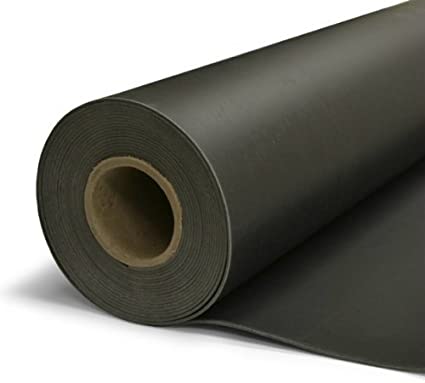
There are many soundproofing materials out there designed to help you soundproof a room. For example, you can use Mass Loaded Vinyl (MLV) or acoustic foam and stick these to the walls of the room to help absorb noise. Both these materials are also great for soundproofing doors with, especially are doors are often hollow and let in excess noise. Acoustic foam and tiles are used in recording studios and are great at reducing any noise heard inside a room.
For gaps and cracks which could be letting in noise, you could use Green Glue. Green Glue can also be used to add to plasterboard and as an extra layer underneath drywall, and works by trapping sound and converting it to heat.
Furnishings can be another great way to soundproof a room. If you have hardwood floors, try adding carpet or a rug to the room. These soundproofing materials will absorb the noise much better than hardwood floors which will reverberate the noise. Adding extra furniture such as a couch and an arm chair can further absorb noise in a room, too. Furniture can help to reduce the amount of echoes heard as the sound has more objects to pass through and ends up being absorbed by the soft materials.
Use Soundproof Curtains
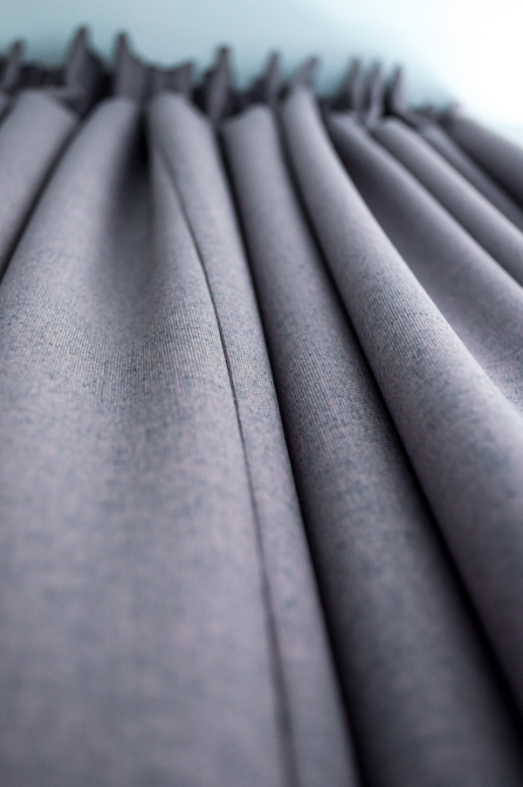
It is often windows that let excess noise in, and this is due to small gaps between the windows and the frames. To combat this, you can soundproof the windows by using soundproof curtains. Soundproof curtains are made of a thick material that will help absorb sound as it comes in through the window so it doesn’t travel into the room.
Soundproof curtains can be bought online, or you could even have a go at making some yourself by adding special padding and soundproof material to the lining of your existing curtains. You could also try soundproof blinds, which are also made of extra-thick soundproof material.
Use Base Traps
Bass traps absorb low-frequency sounds and are made from a type of acoustic foam. They are very easy to install and all you need to do is add them to every corner of the room you want to soundproof.
Isolate The Source
While this technique is better for smaller appliances, it still works. Isolating the source of the sound and adding soundproofing materials or an enclosure to it can help to reduce the amount of low frequency sound that is heard.
Low Frequency Noise FAQs
What is the difference between intensity and frequency of sound?
If a sound is loud, it has high intensity, but this does not tell us what the frequency of the sound is. The intensity of the sound is the amount of energy of a vibration. It is measured in decibels (dB), and affects how loud the sound is. Frequency is the total number of waves produced in one second and affects the pitch of the sound.
How do you measure the frequency of sound?
Frequency is measured in hertz (Hz). The total number of waves produced in one second is the frequency of a sound wave. This is the same as the number of vibrations counted per second as they transmit the sound.
Sound wave frequencies can be measured with a frequency counter or with a spectrum analyzer. These devices work by using a microphone to convert the sound wave into an electrical signal.
How do you test for frequency hearing loss?
The ability to hear high frequency and low frequency sounds can be tested with a hearing test. There are three common ways to be tested: behavioral testing in a sound booth, otoacoustic emission (OAE) testing, and auditory brainstem response (ABR) testing.
Behavioral testing in a sound booth is a child-friendly way of testing for hearing loss and uses headphones. Through the headphones, the child will hear tone and then press a key on the computer or clap their hands or performs another action, and their hearing is assessed.
OAE testing is done to find out how well your inner ear works by measuring otoacoustic emissions, short OAEs, which are sounds the inner ear makes when responding to a sound. ABR testing is less common, and uses electrodes placed around the head to measure the brain’s response to sound. This is normally only used when audiologists suspect your hearing loss could be caused by your auditory nerves or caused by a neurological disorder.
What should I do if I am experiencing hearing loss?
The best thing to do is to take a trip to your local audiologist and have a hearing test. These tests are simple and very effective, and treatment can be offered to you. Hearing loss is common as you age, and over 48 million Americans have some degree of hearing loss. There are many treatments for this, including hearing aids.
Low Frequency Noise Summary
Low frequency noise is any noise measured at a frequency of 500 Hz or lower, with infrasound being measured at a frequency usually below 20 Hz. Examples of low frequency noise include earthquakes, construction work and planes taking off, and these sounds can be harder to block out than high frequency sounds, because sounds lower in frequency will penetrate a surface more easily than sounds with high frequency.
That being said, there are ways to block out these noises, such as using soundproofing materials and isolating the sound. Little research has been done, but it is thought that low frequency noise has many benefits and has been used in the past for monitoring earthquakes and volcanos.

